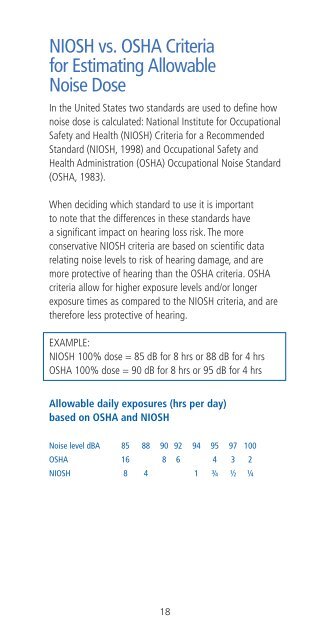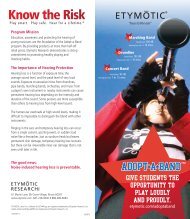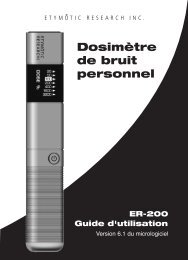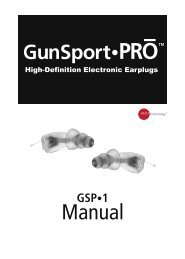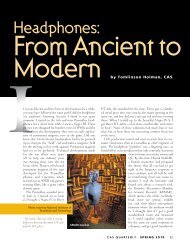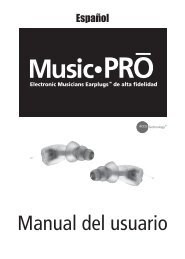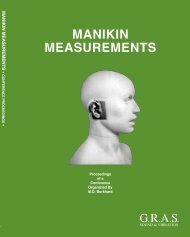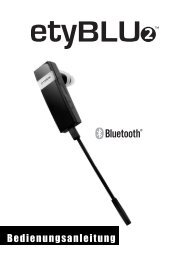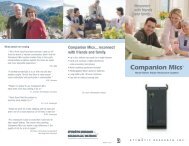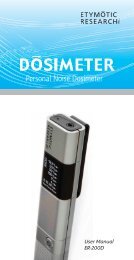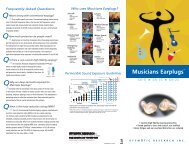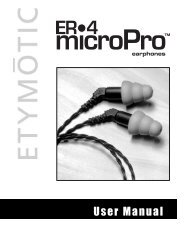ER-200D Personal Noise Dosimeter with Data Logging User Manual
ER-200D Personal Noise Dosimeter with Data Logging User Manual
ER-200D Personal Noise Dosimeter with Data Logging User Manual
Create successful ePaper yourself
Turn your PDF publications into a flip-book with our unique Google optimized e-Paper software.
NIOSH vs. OSHA Criteria<br />
for Estimating Allowable<br />
<strong>Noise</strong> Dose<br />
In the United States two standards are used to define how<br />
noise dose is calculated: National Institute for Occupational<br />
Safety and Health (NIOSH) Criteria for a Recommended<br />
Standard (NIOSH, 1998) and Occupational Safety and<br />
Health Administration (OSHA) Occupational <strong>Noise</strong> Standard<br />
(OSHA, 1983).<br />
When deciding which standard to use it is important<br />
to note that the differences in these standards have<br />
a significant impact on hearing loss risk. The more<br />
conservative NIOSH criteria are based on scientific data<br />
relating noise levels to risk of hearing damage, and are<br />
more protective of hearing than the OSHA criteria. OSHA<br />
criteria allow for higher exposure levels and/or longer<br />
exposure times as compared to the NIOSH criteria, and are<br />
therefore less protective of hearing.<br />
ExAMPLE:<br />
NIOSH 100% dose = 85 dB for 8 hrs or 88 dB for 4 hrs<br />
OSHA 100% dose = 90 dB for 8 hrs or 95 dB for 4 hrs<br />
Allowable daily exposures (hrs per day)<br />
based on OSHA and NIOSH<br />
<strong>Noise</strong> level dBA 85 88 90 92 94 95 97 100<br />
OSHA 16 8 6 4 3 2<br />
NIOSH 8 4 1 ¾ ½ ¼<br />
18


